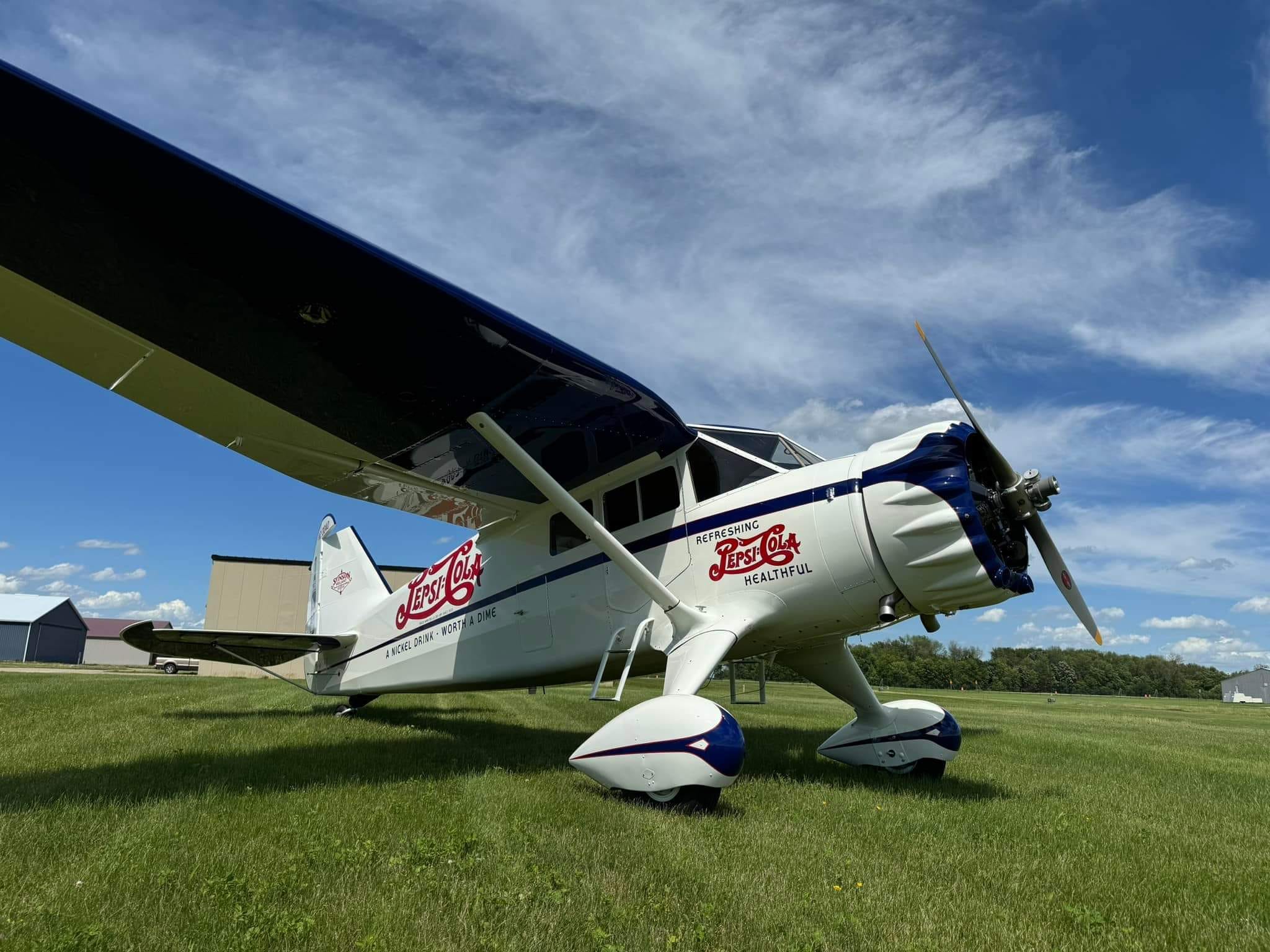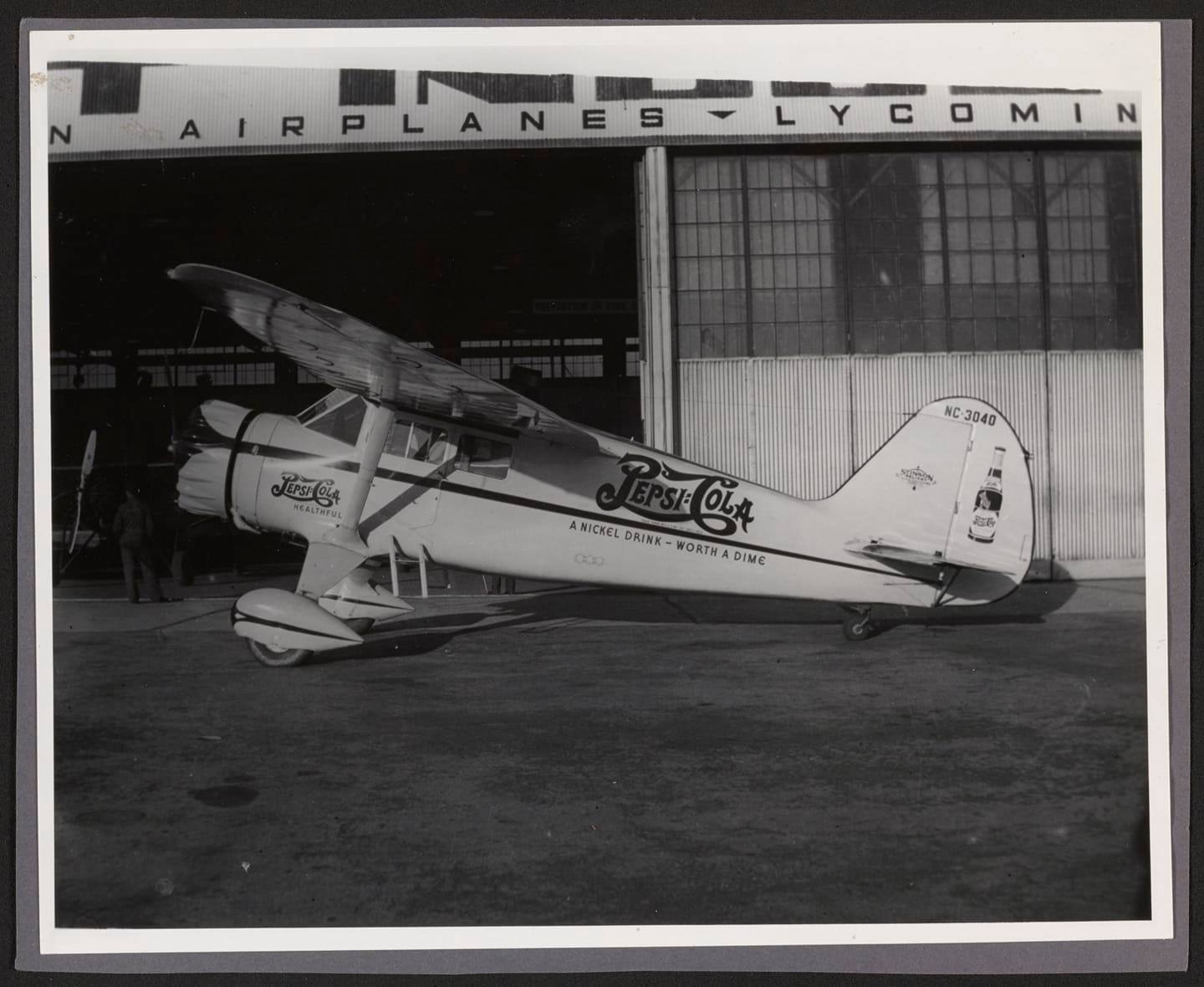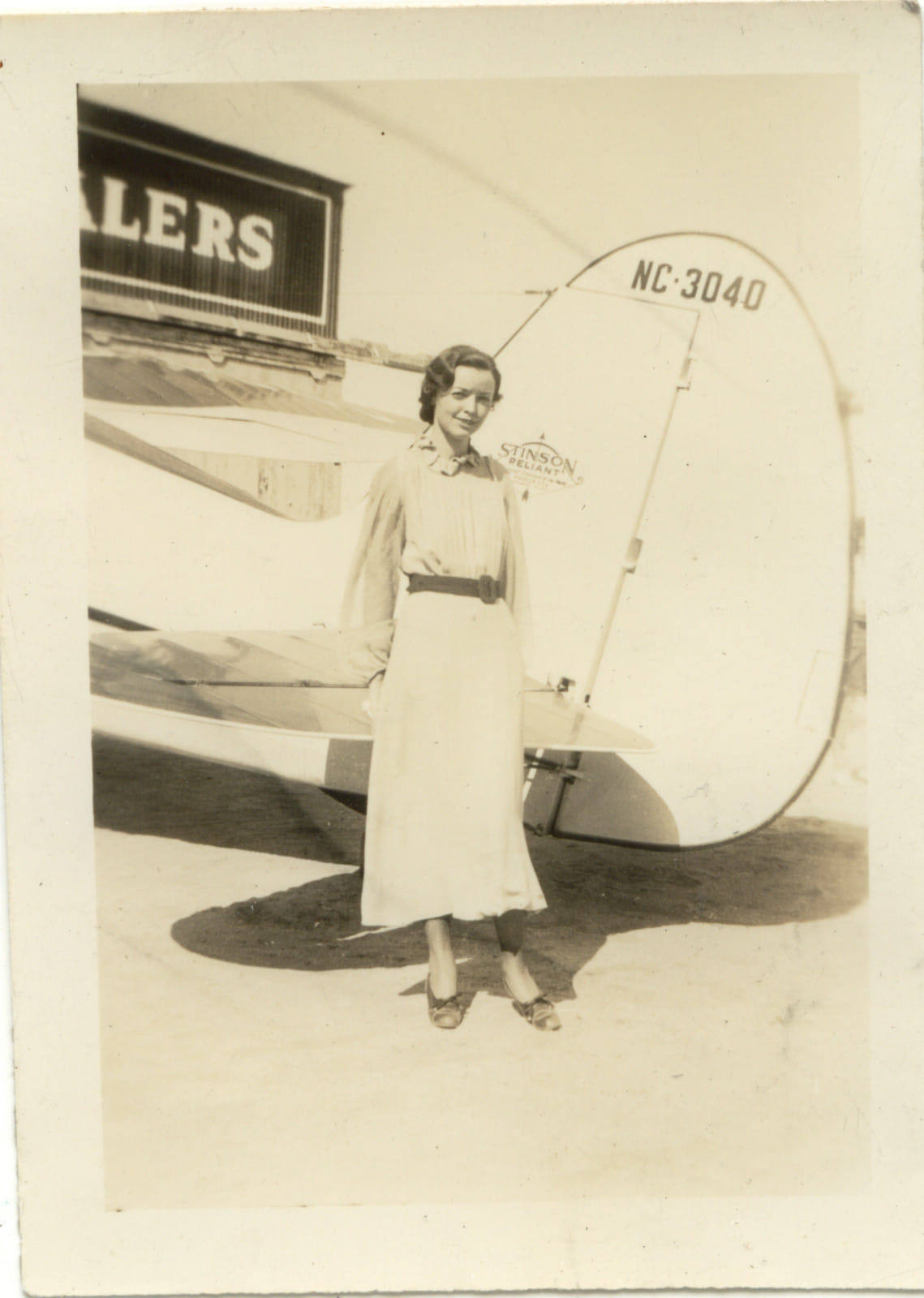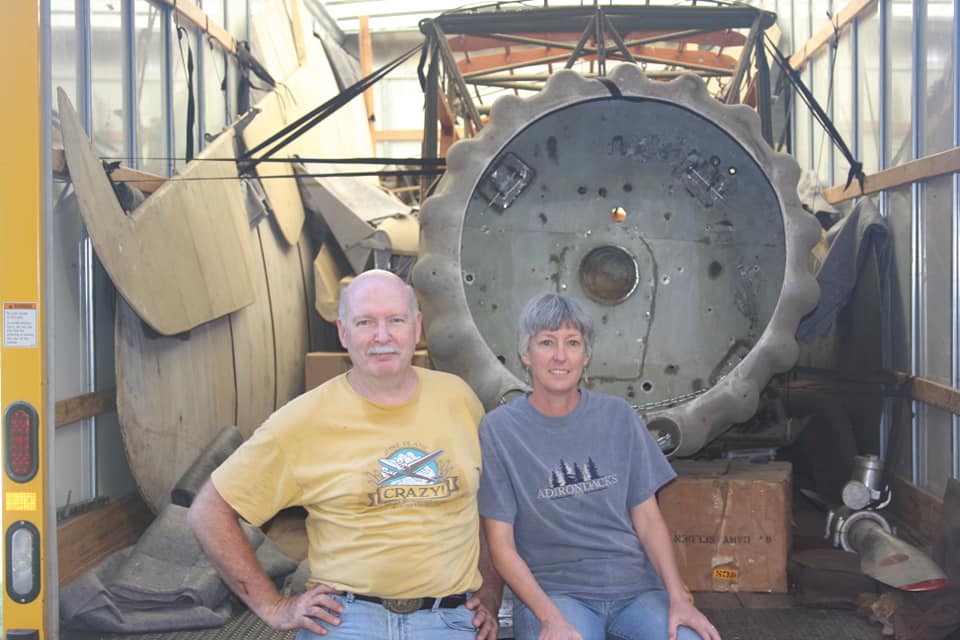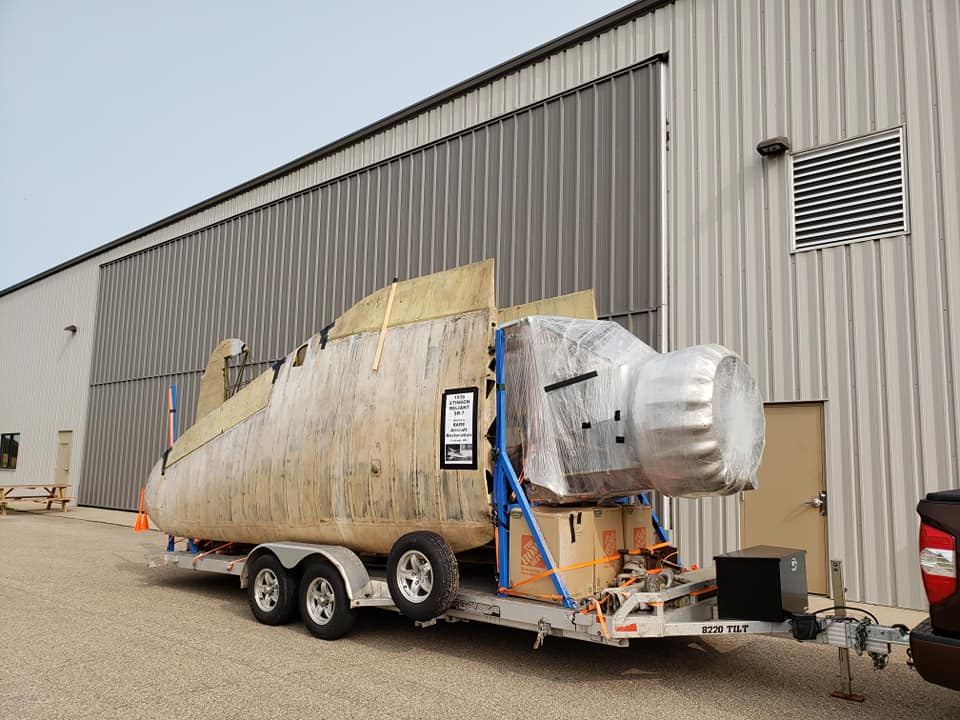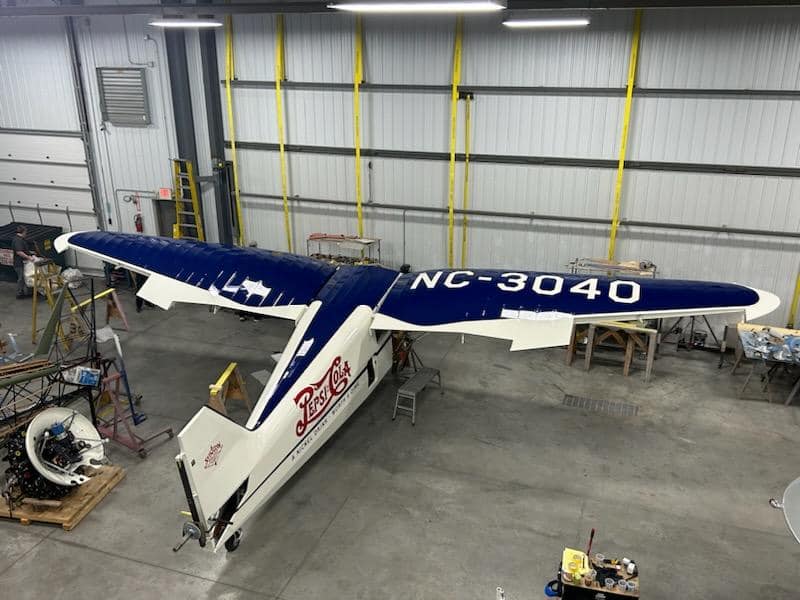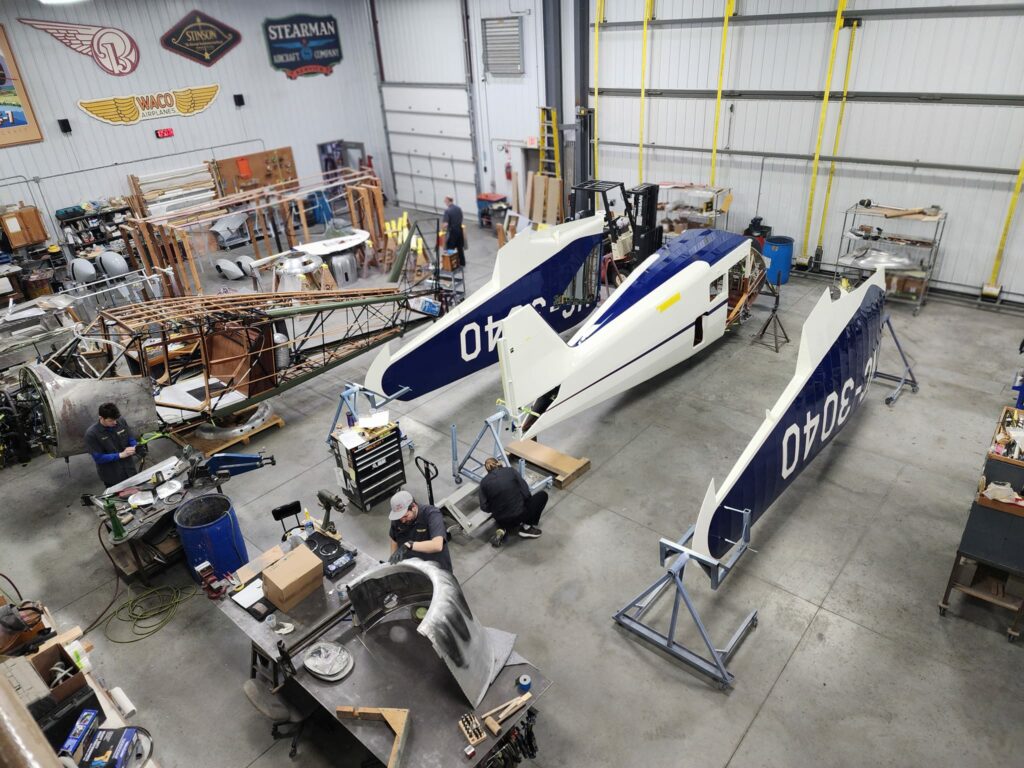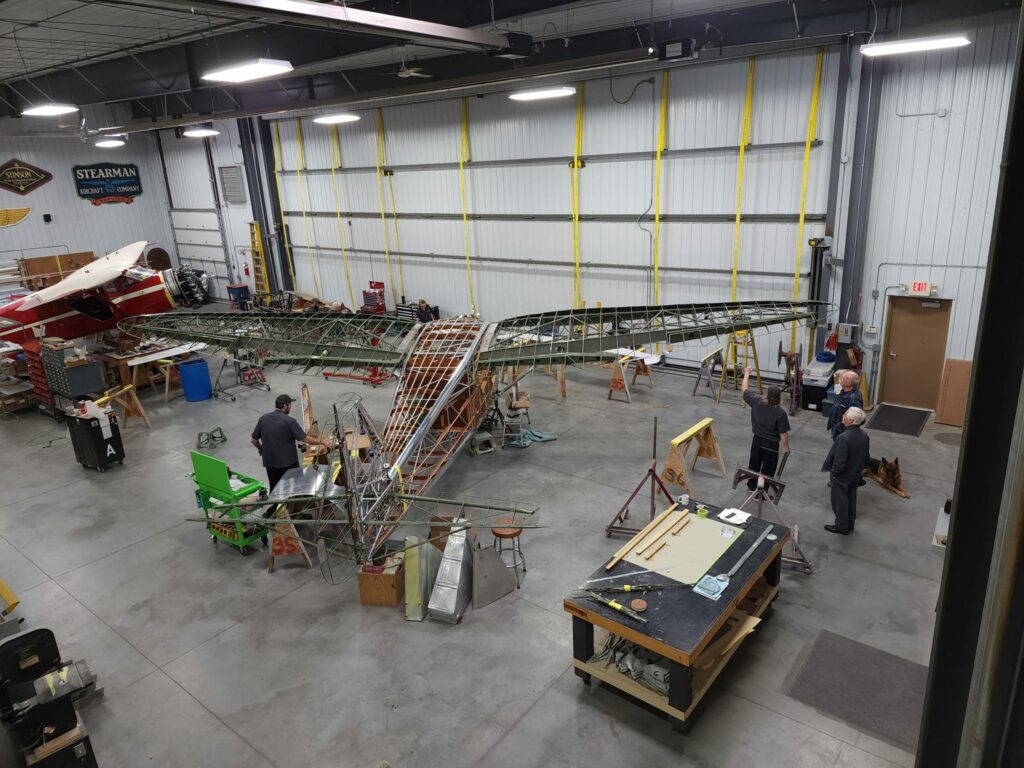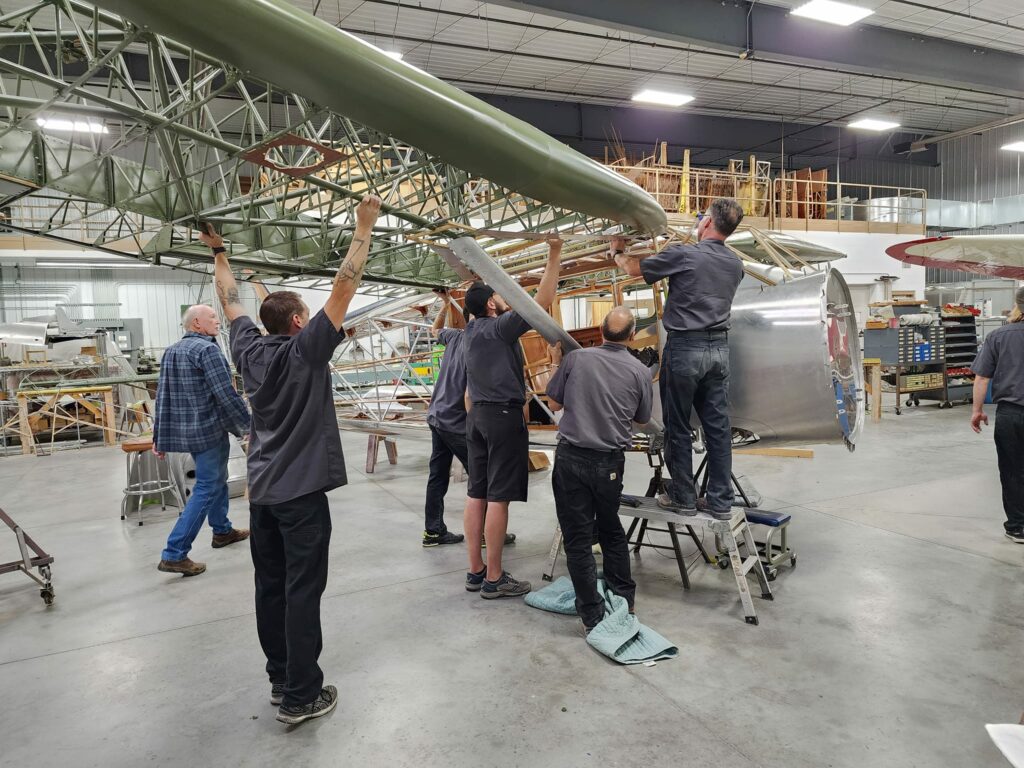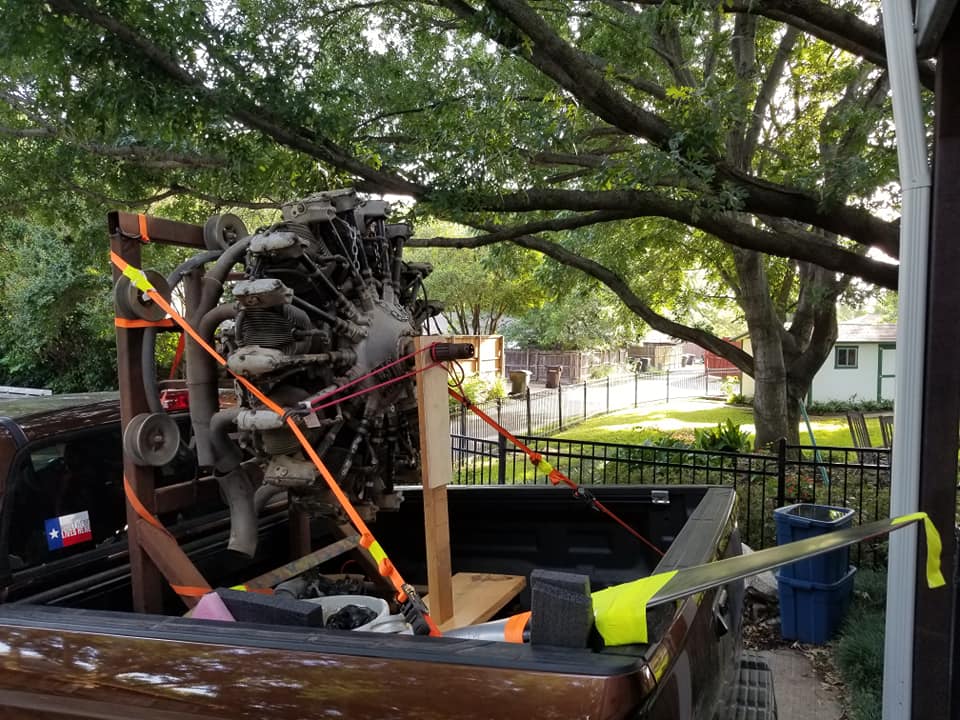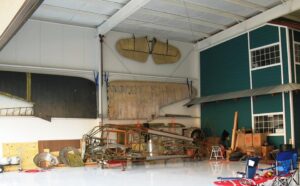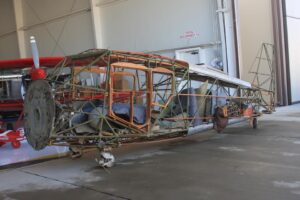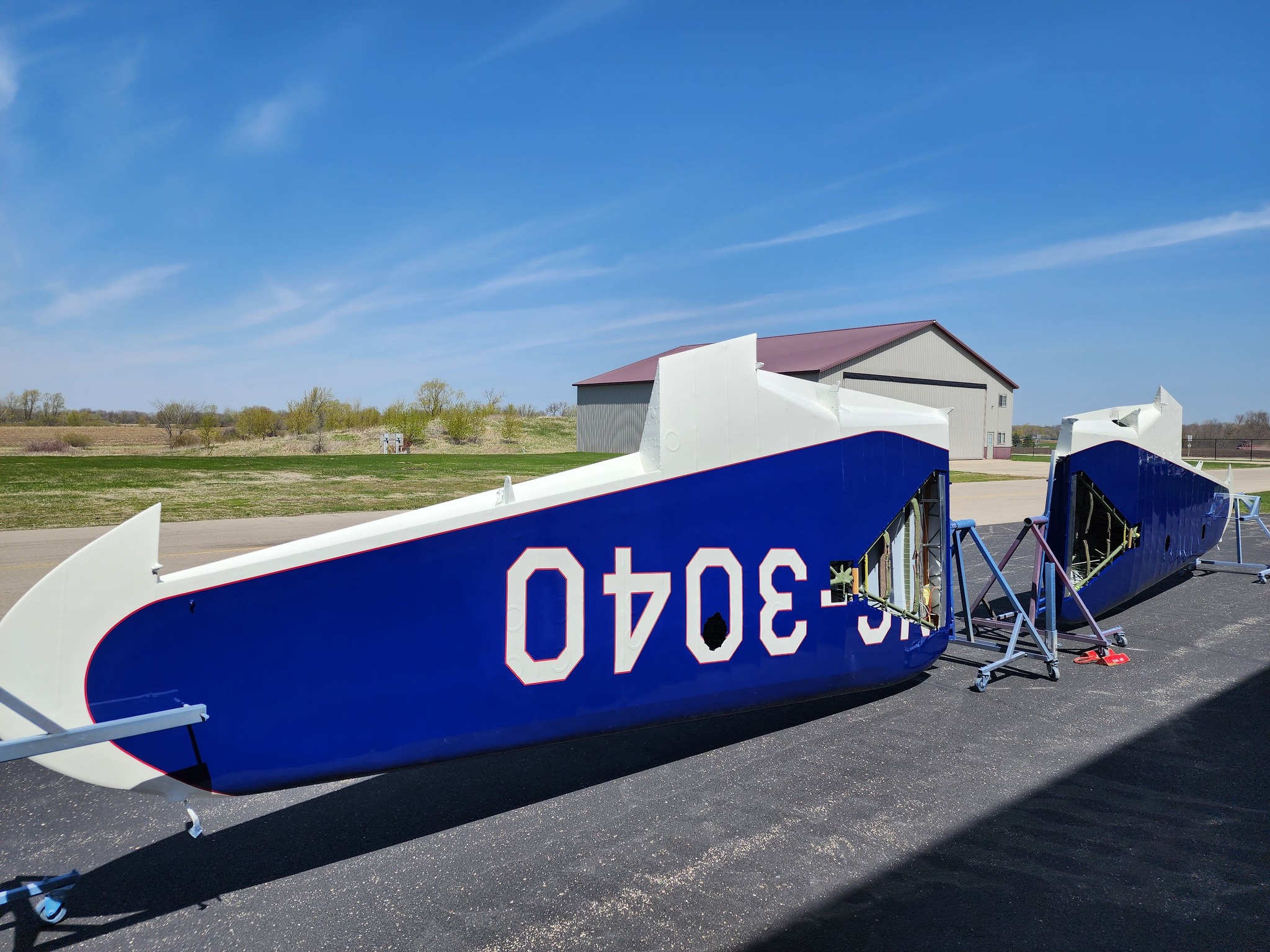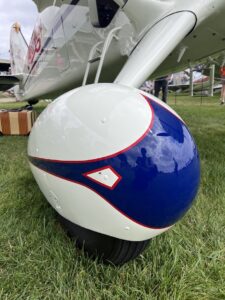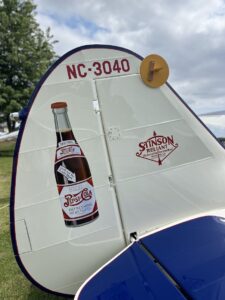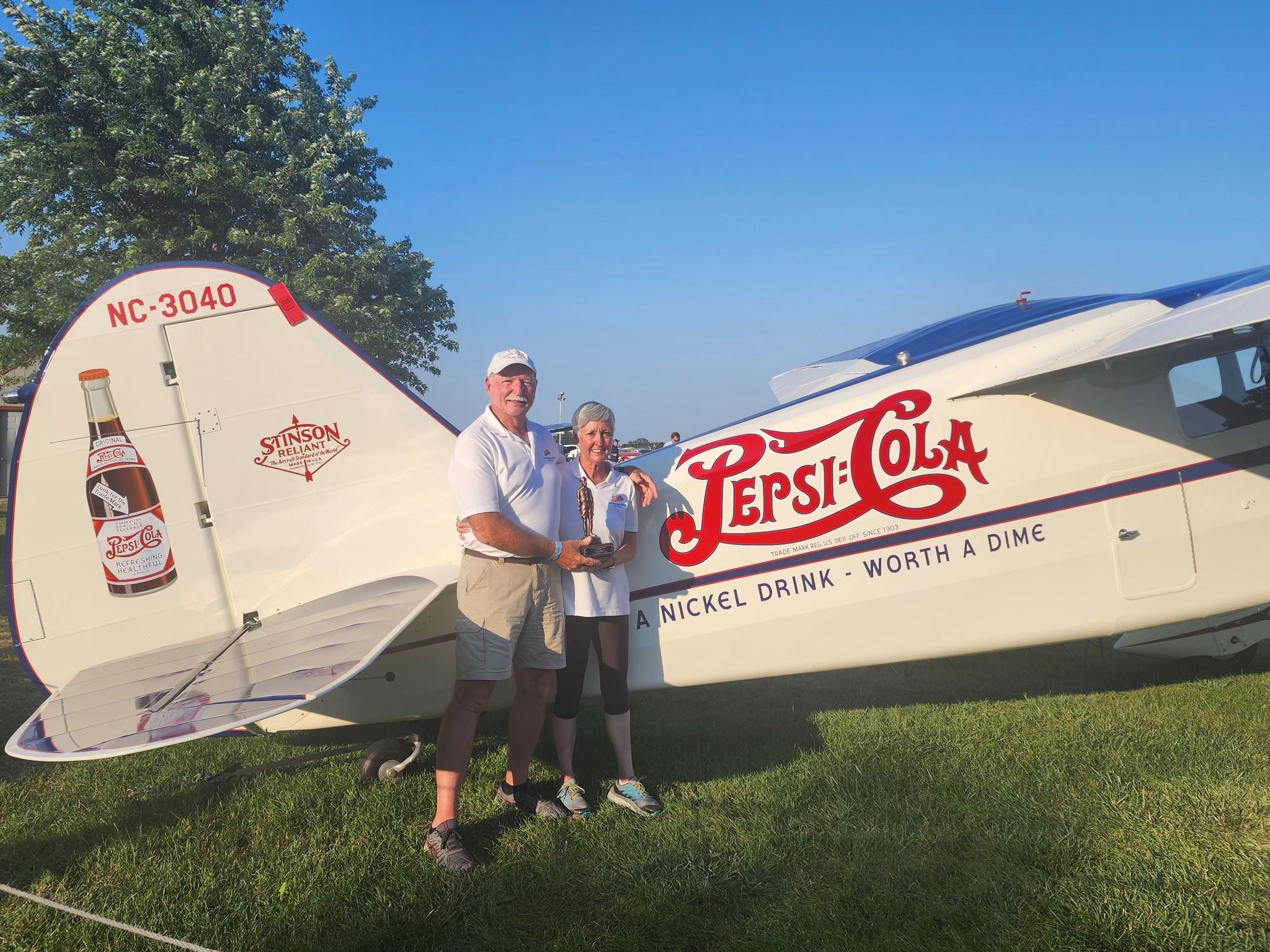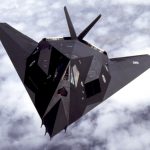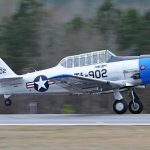There is always something of interest for attendees of the annual Airventure at Oshkosh. In the Vintage Aircraft section, an award-winning Stinson SR-7B Reliant, fresh out of restoration, glistened on the grass in front of the Vintage Red Barn, resplendent in a blue and white scheme with hand-painted logos of the Pepsi-Cola beverage. Under its wings, stood Garry and Janne Ackerman of Plano, Texas, the owners of this magnificent machine, who told attendees all about the story of this airplane and the effort they helped start to return a basket case of an airplane back to its former glory.
The Ackerman’s Stinson Reliant was built in January 1936 at the Stinson Aircraft factory in Wayne, MI as SR-7B construction number 9654, and was registered with the Civil Aviation Authority (CAA) as NC3040 with a Lycoming R-680 nine-cylinder radial engine. One month later, on February 1, it was sold to Air Service Inc., based at Bellanca Airfield in New Castle, DE. This was the same aircraft where the Bellanca Aircraft Company set up its factory and where Air Service had built a new hangar in 1935 on the site of one that had burned in 1934 (Today, Air Service’s 1935 hangar now serves as the home of the Bellanca Airfield Museum). For the next two years, NC3040 was flown as part of Air Service’s rental and charter operation, alongside an SR-8. During the summer of 1936, the aircraft was damaged, and it was returned to Stinson’s factory for repairs carried out in July 1936. Eleven months later, the aircraft was fitted with an RCA transmitter at DuPont Airfield in nearby Wilmington.
Two years later, the aircraft was sold to Pepsi-Cola to be used for promotion and flying VIPs. Conveniently for Pepsi, the aircraft has already left the factory with a white and blue scheme, so the Stinson was painted with the company’s logos on the front and rear portions of the fuselage and a bottle was painted on the rudder. On the rear fuselage the slogan “A Nickel Drink – Worth A Dime” was painted under the Pepsi-Cola logo. After acquiring NC3040, Pepsi had a banner towing system installed on the aircraft, and the aircraft is believed by the Ackermans to have towed banners over the beaches of both the East and West Coasts of the United States.
On February 29, 1940, records show that NC3040 was sold to Timothy Manning of Oakland, CA as part of an investment project. Under Manning’s brief ownership, the banner towing system was removed and the aircraft repainted to remove its Pepsi logos. It is believed that the aircraft was repainted in red and white from this point on. On July 1, 1940, the aircraft was sold to Evelyn Pinckert “Pinky” Brier (née Kilgore) of San Bernardino, CA. Pinky was a female pioneer in that she was the first woman to be qualified as a Certified Flight Instructor (CFI) and as an aerobatic instructor with the CAA in 1938. Along with her husband, Joseph Brier, they ran the Tri-City Airport in San Bernardino, along with the FBO office and a flying school, where she used NC3040 on charter flights. However, when the United States formally entered WWII after the attack on Pearl Harbor, the government restricted any private flights within 150 miles of the coast. The couple would serve their country during the war, with Joe flying overseas and Pinky serving as a member of the Women’s Airforce Service Pilots (WASPs), graduating in Class 44-W-9 and being assigned to Minter Field near Bakersfield, CA. After the war, the Briers returned to running Tri-City Airport, and when Pinky stopped flying at age 80, she had accumulated an estimated 100,000 hours in the air, and lived on to the age of 98. But even before Pearl Harbor, she had sold NC3040 to Southwest Airways (not to be confused with Southwest Airlines) on November 3, 1941, and would also lease the airport to Southwest.
Based out of Phoenix, AZ, Southwest was a startup that aimed to make a profit from the government-sponsored Civilian Pilot Training Program, which was set up to train civilians to fly before receiving further military instruction after enlisting. Southwest was also a contract air freight carrier working on behalf of the Army as well. NC3040 would fly with Southwest as an advanced trainer and VIP transport until coming under the ownership of the Defense Plant Corporation, a subsidiary of the Reconstruction Finance Corporation to create loans for state and local governments, along with private businesses involved in the war effort.
In 1944, the aircraft was purchased by the Iowa Airplane Company of Des Moines, IA, a short-lived flight training operation that seemed to have sprouted up during the war but folded soon after the war in 1945. Documentation relating to repairs made by the company to the Stinson’s upper right engine mount would later be used by the Ackermans to validate the aircraft’s identity.
After the war, the aircraft passed through a few more owners, such as North Country Airways of Saranock Lake, NY before being acquired by Jack Baird of Marshall, MI. According to CAA documents, the aircraft was modified with a 300hp engine and a Hamilton-Standard propeller, underwent weight-and-balance checks and an annual inspection. It is not known, however, for how long the aircraft was flown by Baird. In the coming decades, many owners acquired NC3040 in the hope of restoring it, but the aircraft did not fly again, passing instead from one owner to the next. In one transfer of ownership in 1965, the aircraft was sold to Don Serra of Chula Vista, CA alongside nine additional Lycoming R-680s. The last owner prior to the Ackermans was Wilson Cary Selden of San Jose, CA. Selden was a car enthusiast and car restorer and a private pilot, so he reasoned that he should make his next project an airplane. But as it happened to prior owners, it happened to Mr. Selden; “What to do next?” Unfortunately for the Stinson, however, Selden got into other projects that took his attention away from the Stinson, so he hoisted the fuselage into the rafters of his shop and everything that was boxed up was placed on shelves, waiting for that someday when Selden would pull everything down and get to work on the plane. One year turned into two years, then five, then ten, then twenty, then thirty years. But it would be precisely this point in the story where the Ackermans would get involved.
Garry himself would write about his and Janne’s effort to acquire the Stinson thusly: “Tom and Jeff Ferarro had recently brought the Shell Oil SR-10 home to live on the airport where we have our hangar. I’ve always believed the Gullwing Reliants to be the most beautiful airplane ever built, so I was totally green with envy. I resolved to someday own one but having heard rumors about what Tom and Jeff had paid for their plane, I knew I’d have to find a project and build it myself. Although I wasn’t actively looking for a project, I was primed. A model airplane buddy was building a scale model of the PepsiCola Stinson and asked me to help him find a color photo. I jumped on the internet search effort. Very quickly I was sidetracked by a small thumbnail of the well-known PepsiCola Stinson photograph. The link took me to a car enthusiast’s web page, and a one-page request for assistance in organizing a project… to get the PepsiCola Stinson back in the air. Curious about whether this link was some sort of internet mix-up, I called the number to find out if the owner of the page might have any more photos of that plane. The phone call lasted much longer than expected, but the short version is the owner didn’t have any more photos, and since he was 77 years old and had just had heart surgery, he needed help more than ever if he was going to get to fly the plane. Suddenly, it occurred to me like a bolt of lightning out of the blue sky… he needed to sell the project to me! I told him I was an experienced A&P and had one of the largest flying clubs in the country… and had just received an IRS refund check that I’d be willing to spend if he’d sell me the project. He politely declined and we eventually ended the call. An hour later he emailed me a dozen pictures of the plane hanging in the rafters of his shop. I went by Tom’s hangar to get his opinion. His response was “You need to get on your bike and pedal as fast as you can to get this!”\
When a person already owns multiple airplanes and projects, that person instinctively knows the approach to the wife about buying another one must be carefully considered. I’m not very good at that sort of thing. I handed Janne a stack of photos and told her “The first one is of the PepsiCola Stinson in 1938 and the rest are of it as it is today.” Then I relayed what Tom had told me. Her response took a second to sink in… “Well, if Tom thinks we should do it, then we need to do it!” Thank you, Tom. Oh, and I have an awesome wife!
It would be easy to fast-forward a few days to when we were loading up the truck, but that would leave the reader wondering where the title of this book came from. I called Mr. Selden the next day. He told me he thought the project was worth two or three times what I was offering but that what really had him hung up was the fear that the plane might never fly again – that it might be parted out. There was only one way to respond… “I promise, Mr. Selden. I promise not to part it out. I promise your plane will fly again.” And yes, three days later we were loading NC-3040 out of his shop into a 26-foot box truck, headed for our hangar in Texas.”
Once the Stinson arrived at the Ackerman’s hangar at McKinney National Airport, they determined to make the plane their retirement project, but by 2020, they had made little progress on the airplane in nine years, as other projects and priorities in life came and went. They feared that they might become yet another addition to the list of ambitious owners who could not make the Stinson fly. But the Ackermans would not give up on the Stinson, instead choosing to make a leap of faith to hire a sop to return the Stinson to its former glory.
In June 2020, the Lycoming R-680 was placed in the bed of a pickup truck, weatherproofed, and driven from Plano to Radial Engines Ltd in Gutherie, OK to be restored to running order. The airframe, meanwhile, would be sent much further north to RARE Aircraft Ltd of Faribault, MN, one of the premier vintage aviation restoration shops in September 2020.
Over the next four years, RARE Aircraft worked on the Stinson, removing the remaining fabric from the wings, straightening bends and addressing corrosion in the tail, and rectifying other structural issues in the wings and fuselage. One of the most fortuitous aspects of the restoration of NC3040 was that many of the more unobtainable parts in the form of the engine cowling and wheel covers were reusable. Rather than pressure testing the fuel tanks, the specialists at RARE Aircraft disassembled the tanks and replaced any corroded sections that were found. Some parts were re-fabricated at Faribault, such as the firewall. While the project had come with the original firewall, it was manufactured with asbestos insulation sandwiched between the aluminum panels. The new firewall that was added to the Stinson was a stainless steel piece. Wooden parts of the wings and fuselage were also restored or replaced where necessary.
In October 2022, the wings were test-fitted before being doped in fabric and the new wiring and control cables were added before the aircraft received its new fabric surfaces. The wings and control surfaces were painted in May 2023, while the fuselage was covered and ready for paint in February 2024. By September 2023, the R-680 engine was ready for reassembly and was sent up to RARE Aircraft to rejoin the rest of the aircraft. During February – April 2024, the aircraft’s fuselage was repainted, complete with the old Pepsi-Cola logos. During the 1930s, these logos were hand painted as opposed to being airbrushed or applied using decals. In keeping with the originality of the aircraft, these logos, along with those for the Stinson Aircraft Company, were similarly hand painted by the team at RARE Aircraft. In May and June, the finishing touches and the interior furnishings were applied to the aircraft. Perhaps if the aircraft could be flight tested soon, they would be able to fly to Oshkosh.
On July 12, with distant cumulus clouds as backdrop, Stinson SR-7B NC3040 taxied out to the runway at Faribault Municipal Airport and for the first time in nearly 70 years, it took to the air! Within a week, it had made the 236 mile flight east from Faribault to Oshkosh, where it was displayed in front of the EAA Vintage Airplane Association’s Red Barn for AirVenture 2024 with just 10 hours on the airframe since its restoration. At every hour the show was going on, the Ackermans were met with thousands of enthusiasts who gazed upon the Pepsi-Cola Stinson, and thanked the couple for their dedication in bringing the airplane back to life. By the end of the week, the aircraft was awarded a Bronze Lindy award for Customized Aircraft Champion.
With a Lindy Award to place on their shelf, the Ackermans will have the aircraft receive further work from RARE Aircraft in Faribault before they fly home to McKinney, TX. Their Stinson has had a long and illustrious history and in the Ackermans hands, it is sure to keep flying for years to come.
Many thanks for Garry and Janne Ackerman for their dedication in having the aircraft restored and another round of thanks to the staff of RARE Aircraft Ltd and Radial Engines Ltd for their work in bringing this piece of history back to life.
To trace the history of the restoration project and to keep up with the Pepsi-Cola Stinson, visit The PepsiCola Stinson Facebook group here: The PepsiCola Stinson | Facebook







